Moneyback guarantee on hearing aids
30 days money back guarantee on ALL hearing aids.
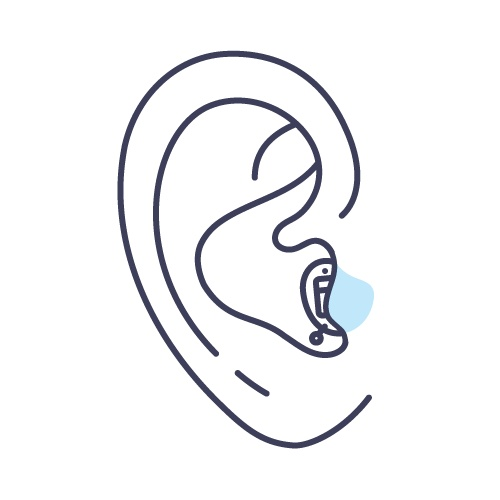
Completely In The Canal (CIC) are still one of the more popular styles of hearing aid.
Very discreet, in that if you see anything at all, it tends to be just a tiny bit of the face plate or the extraction chord. They are also suitable for more ears than IIC aids as they don't have to go in as far.
Also some models (such as Starkey) are now available with the option of Bluetooth connectivity, which means the ability to stream from a smart phone.
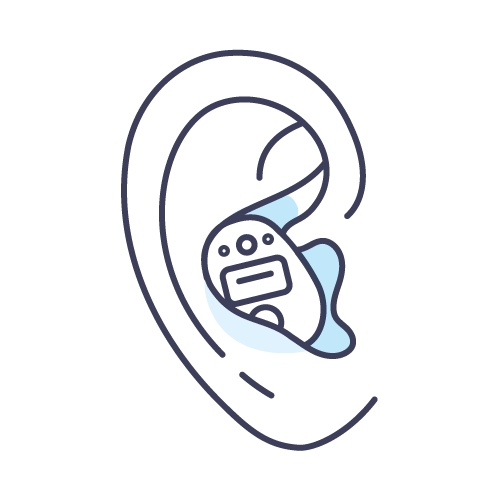
Full Shell are the largest of the In The Ear styles of hearing aids.
Twenty years ago they were popular with private hearing aid wearers, as they were more powerful than smaller aids but nowadays that's no longer the case.
Today those who choose Full Shell aids normally do so for reasons such as arthritic fingers making a larger aid (and it's larger batteries) easier to handle.
Some manufacturers, such as Starkey now also offer this style in a rechargeable version.
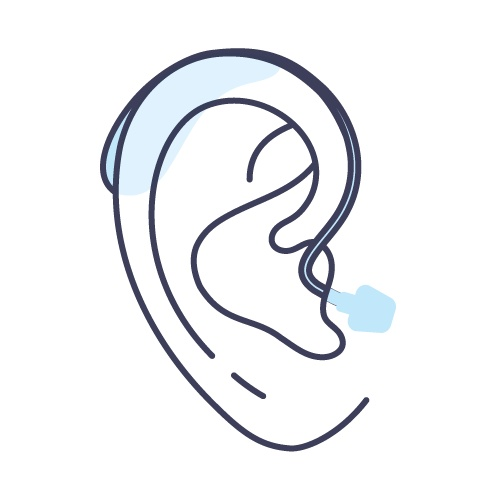
The Receiver In The Canal (RIC) style are now without doubt the most popular type of hearing aids.
The body of the hearing aid is located behind the ear and is attached to either a dome or a miniature custom mould in the wearers ear canal by a very thin wire.
This type of aid is widely accepted as the most comfortable and unobtrusive style available. It is also the most versatile as it can be fitted with mild to severe hearing losses.
Other advantages to this style are the capability to stream from a smart phone, rechargeability options and the user having greater control of the sound by using a specially designed app.
From the front and side, RIC aids are often less noticeable than most In The Ear aids.
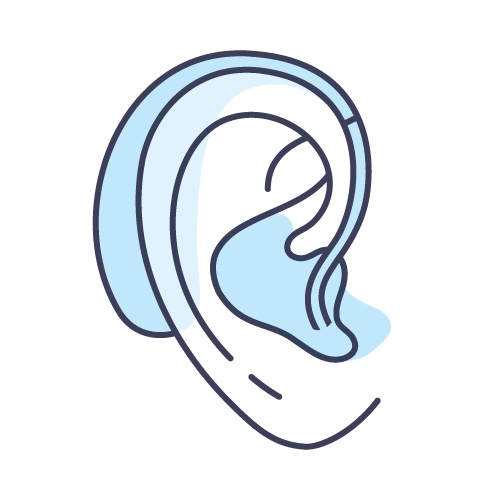
Behind The Ear (also known as BTE) hearing aids are not as widely used as they used to be, although the NHS still use them.
BTE aids consist of the hearing aid part which is located Behind The Ear (as the name suggests). The sound then travels down a hollow tube which attaches to an mould that is situated in the users ear.
If the user has good low frequency hearing and just struggles with the higher end of the speech spectrum, the NHS will often utilise an open ear fitting instead. This still consists of a BTE but instead of a thick tube and mould it has a thin tube leading to a small rubber dome in the ear. The dome (when the hearing loss allows) can be an open fit, letting the wearer hear low frequency sounds naturally through lots of holes in the dome. The downside of open fit NHS aids is that they usually feedback if the user has any wax in their ears.
Privately, BTE hearing aids aren't dispensed that often these days, mainly due to how superior Receiver In The Canal (RIC) are.
They are still used for profound hearing losses though and in instances where somebody might have an ongoing problem with ear infections.
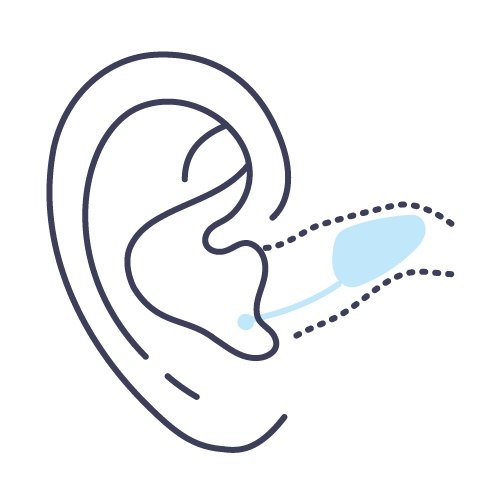
Invisible In The Canal (IIC) hearing aids are particularly popular with those who prioritise the invisibility of their hearing loss above everything. If you don't have the kind of hair style that enables you to hide hearing aids, IIC offer the user the ability to to wear hearing aids undetected.
Sitting deeper then the Completely In The Canal (CIC) style, IIC aids are undetectable.
The only disadvantage with IIC aids, as with any other very small hearing aids is that what you gain in Invisibility, you tend to compromise in technology capabilities and battery life. For instance some other hearing aid styles have bluetooth capabilities for streaming or controlling your hearing aids with an app. With Invisible In The Canal aids you can't fit that technology into the shell.
Still for a first time wearer, who perhaps feels to young to be wearing hearing aids, IIC aids are a lifesaver.
I have recently purchased my first pair of hearing aids from Andrew Cattini (AJC Hearing) due to my hearing loss and tinnitus.
Andrew offers a great service. He spent time with me, explaining any relevant issues of using hearing aids and their suitability for my requirements prior to doing the actual hearing test in the comfort of my own home.
I had previously gone to a large high street franchise, but decided to see if I could better the prices I had been quoted, and this is where AJC Hearing saved me over £1100 on the exact same model of hearing aids! (Phonak Audeo Yes). Whilst still offering the same level of free service and support.
Andrew did a follow up consultation after a few weeks to make sure I was happy, and I was - with the advice, the product and a great personal service.